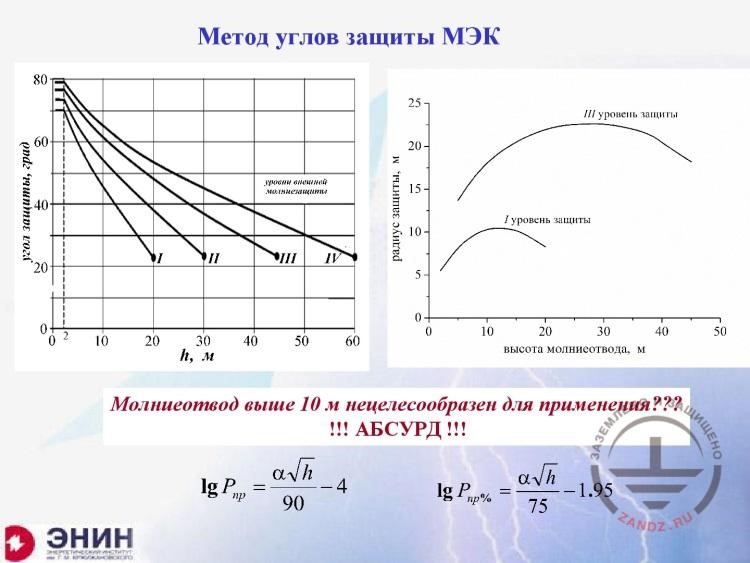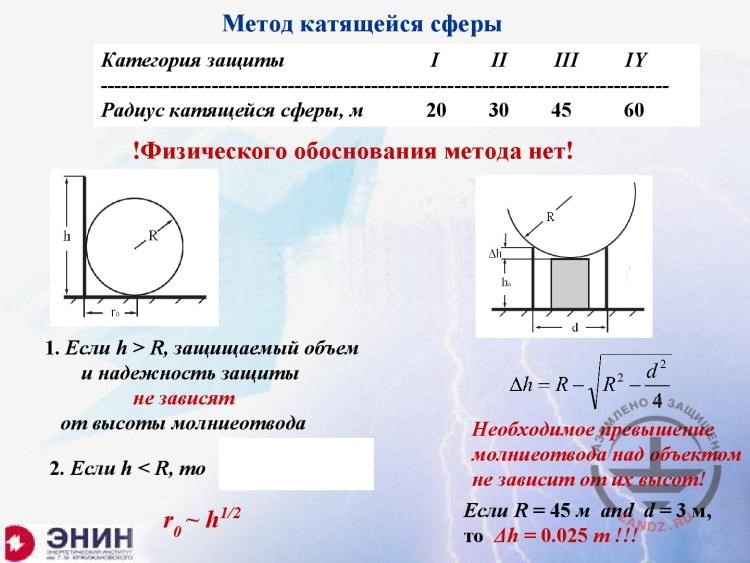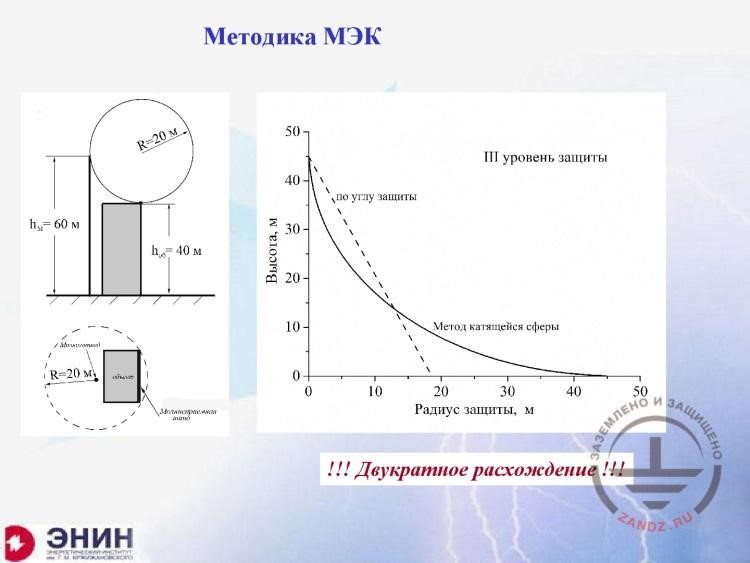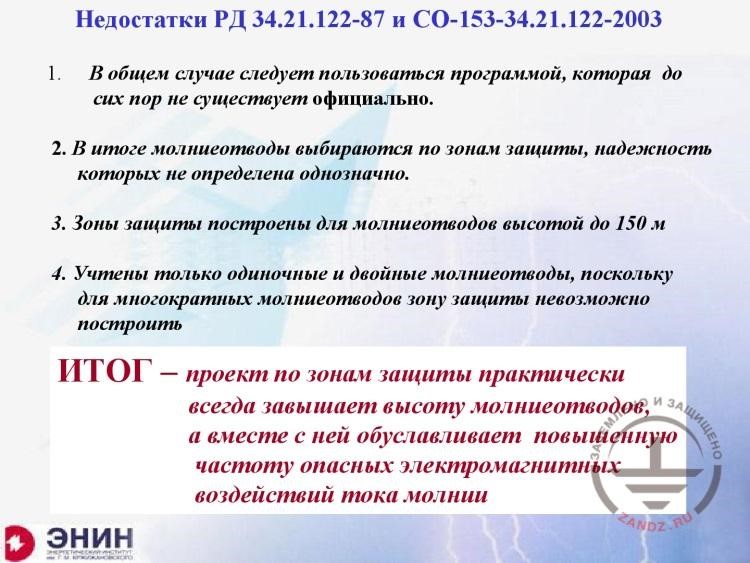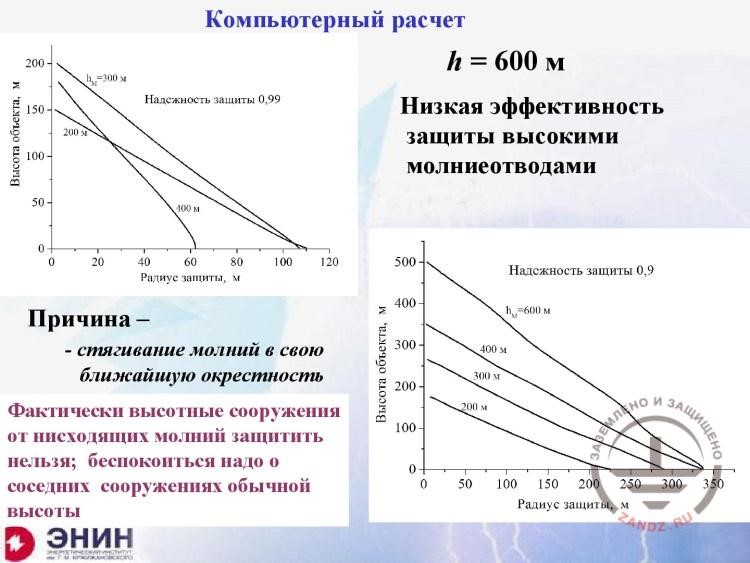The eighteenth webinar of "Earthing and Lightning Protection: Design Issues and Problems" series.
(held on September 20, 2017 at 11:00)
In the previous webinars, these issues were addressed in various forms. Unfortunately, their relevance has been increasing year by year. And this is not surprising. Microelectronic devices are being used in the Russian equipment on a large scale. Their performance determines the reliability of complex and responsible enterprises functioning, which cannot be shut down not only due to high price of the manufactured products, but also due to the need to provide safety and comfort of the population living in large regions.
The number of practically significant situations is increasing, when the reliable protection of electrical circuits against electromagnetic interference of various origin, which are directly or indirectly associated with the electromagnetic field of the lightning current, is more important than the protection of the equipment against the direct contact with the lightning channel. New requirements to the lightning arresters and their earthing devices, which have appeared in connection therewith, have not yet been reflected in the Russian regulatory documents.
We have to remember that "nature abhors a vacuum". When official regulatory documents do not specify the requirements, the society generates them on its own. However, they are not always justified and sometimes even harmful. We can only mention the isolated earthing devices that do not protect from the lightning current penetration into the most critical electrical circuits in the most design solutions.
Foreign manufacturers constitute another danger. To sale their products on a commercial scale, they offer ready-made lightning protection designs that are implemented on the basis of the IEC standards. It happens rather often that the technical solutions based on these standards are poorly used in the Russian practice of lightning protection; and in some situations, they even conflict.
We invited foreign specialists several times to an open discussion. But we got no response. However, they do not have a problem with offering the mentioned design solutions.
And finally, there is one more conflict block. It is caused by almost impracticable requirements in the regulatory documents.The designer and the installing company face an indestructible barrier here. It happens rather often that we have to fake in order to get round it.
After the webinar, a specialist can hardly ignore the existing standards. But he/she will be able to choose a technical solution that appears feasible in terms of economic issues and allows providing the reliable operation of the facility during the storm.
720p full screen watching is recommended.
Webinar text. Page 1
Fast navigation by slides:
Page 1:
1. Conflicts in regulatory documents
2. Choosing external lightning arresters
3. Importance of height of a lightning arrester
4. Why is the IEC standard unacceptable?
5. IEC shielding angle method
6. Rolling sphere method
7. IEC methodology
8. RD and SO drawbacks
9. High lightning arresters: an obvious mistake!
10. Computer calculations
Page 2: >>
11. Protection zone reliability
12. Multiple lightning arresters
13. How to design without software?
14. Roof of a climate control device
15. Closed wire in SO-153
16. Parallels with the lightning rods
17. Problems when installing?
18. Bolt connection tests
19. How to be successful with Gostekhnadzor?
20. Earthing and lightning protection. IEC standard
Page 3: >>
21. Earthing in lightning protection. RD 34.21.122-87
22. The "Transneft" standard
23. Conductive coupling through the soil
24. Earthing circuit of an industrial facility
25. Creeping discharge hazard
26. Step and touch voltage rating
27. Step voltage at the 30 kA lightning current
28. Russian electrical safety standards
29. Lightning protection grid
30. Questions and answers
Approximate reading time: 1 hour 23 minutes.
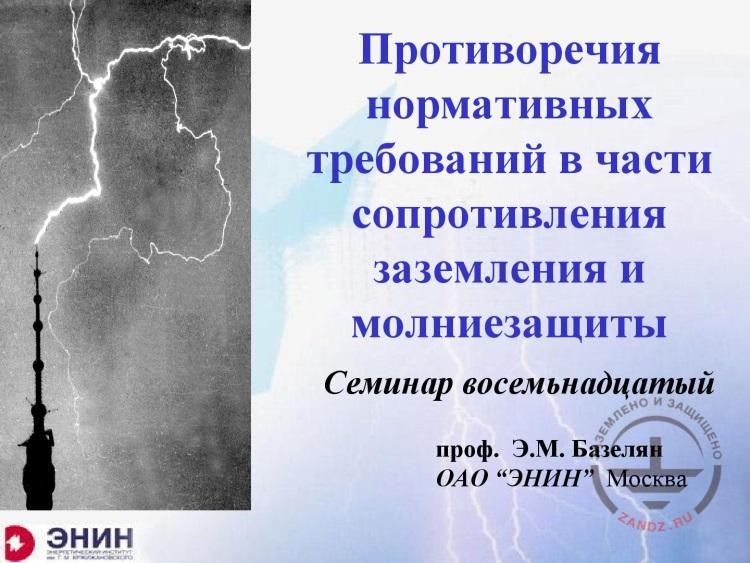
Conflicts in regulatory documents
| Противоречия нормативных требований в части сопротивления заземления и молниезащиты | Conflicts in regulatory documents in terms of resistance of earthing and lightning protection |
| Семинар восемьнадцатый | The eighteenth seminar |
| Проф. Э. М. Базелян | Prof. E.M. Bazelyan |
| ОАО «ЭНИН» Москва | “ENIN” OAO Moscow |
– Good afternoon, dear colleagues! We are happy to greet you in our next webinar with the participation of professor Eduard Meerovich Bazelyan, the well-known expert in lightning protection and earthing. Dear colleagues, let me remind you that this year, we have scheduled a highly intense webinar program. The next webinar for the designers will be held on October 18, titled: "Calculation of Lightning Protection Reliability for Any Facility for 30 Minutes using a ZANDZ Calculation Service". Moreover, we have planned a webinar with Eduard Meerovich, titled "Origin of Lightning Protection Zones, Their Actual Capabilities, and Negative Impact on External Lightning Protection Optimization" for November. We are going to send the link to the event now. Please follow the link and register so that not to miss the relevant events. Moreover, you may get information on new events in our social networks. Join our groups and you will see our soonest events. So, today we have got a webinar of the series for the designers. Its title: "Conflicts in Regulatory Documents for "Earthing and Lightning Protection". How to Deal with Them Properly?" Despite the fact that this subject was addressed in the previous webinars, there are still many questions remained. They permanently appear in the forums and we receive them by e-mail or by phone. Today, we will try to answer them. Again, I ask you to send your questions eagerly and leave comments in the chat. Here are some organizational aspects: the webinar will take about 70 to 80 minutes. We will answer your questions at the end of the webinar or, if needed, immediately as they appear. When writing your questions or leaving your comments, I recommend that you also indicate the slide or the professor's phrase they relate to. It will be more convenient for us. We will be able to operatively and purposefully answer them. Dear colleagues! Now, the introductory word is over and I give my turn to the speaker. Eduard Meerovich, good afternoon!
— Good afternoon, dear colleagues! Let me congratulate you with the designers' professional holiday. You know, I did not like the subject offered by Anatoly for the following reason: I think that I cannot say anything new regarding this. One way or another, we discussed these issues in various webinars. But I was made an objection: first, a new generation of designers emerged, and we have to take their interests into account, and, second, we have no new regulatory documents. In 2016, the lightning protection conference was held in Russia. During this conference, a very long and convincing resolution of all participants was sent to the Russian Academy of Sciences, in which we asked to create a special committee that would develop a new regulatory document regarding the lightning protection. We had an agreement with the President of the Academy of Sciences that such work may be performed. But you know what happened to the Russian Academy of Sciences. They have got problems with the presidential elections. They have no time for the regulatory documents. So, frankly, I do not know when we have such a new regulatory document. But I think that we will not have one in the next one or two years. We have to use the old document with the old problems and we certainly have to clear them out.
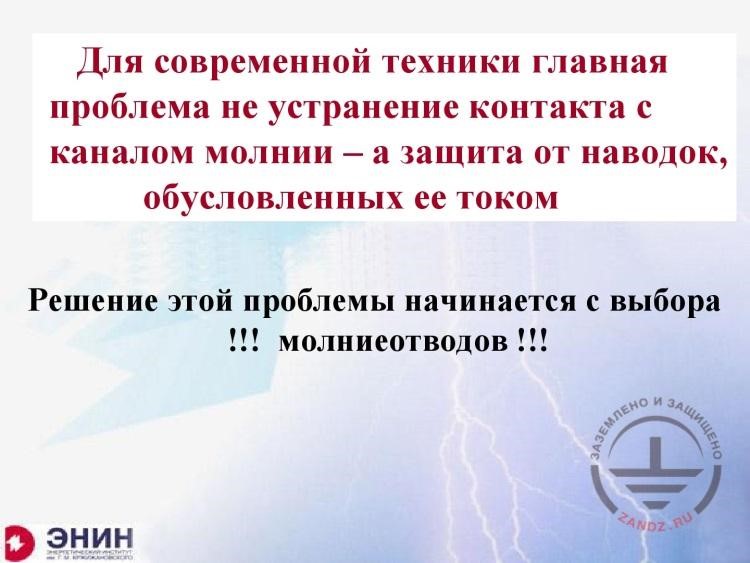
Choosing external lightning arresters
| Для современной техники главная проблема не устранение контакта с каналом молнии – а защита от наводок, обусловленных ее током | In case of modern equipment, the major problem is not eliminating its contact with the lightning channel, but rather protection against the interference caused by its current |
| Решение этой проблемы начинается с выбора !!! молниеотводов !!! | The solution for this problem begins with choosing the !!! lightning arresters !!! |
– I would like to try to collect all the unclear or even erroneous information contained in both the Russian regulatory documents and in the documents of the International Electrotechnical Commission (IEC) related to the lightning protection. And I would like to start with the following point. Today, the attitude to the lightning protection is different from that was 30 years ago, let along 50 years ago. Lightning is no more a scary story with regards to buildings and structures. Lightning cannot destroy the building and lightning cannot put the modern building on fire. Unless it is a tank farm containing liquid or gaseous fuel. What problems can the lightning entail? Today, the lightning causes danger through its electromagnetic field. The electromagnetic field, when it damages the microprocessor hardware that currently controls all types of production, results in the damages that are significantly more than any mechanical destruction of the building. Therefore, today, the regulatory documents must be directed to the prevention of hazardous electromagnetic impacts of the lightning. With this, not a single regulatory document is directed to the external lighting protection. And the first problem is the one associated with choosing the external lightning protection and the lightning protection design.
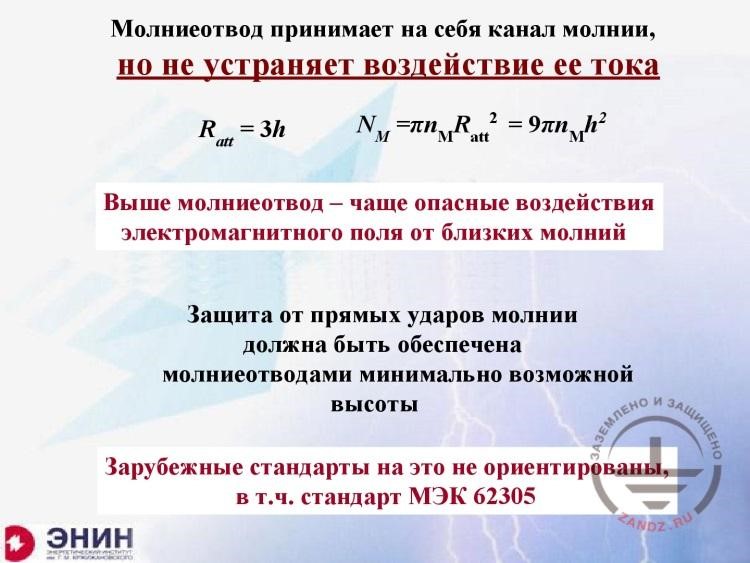
Importance of height of a lightning arrester
| Молниеотвод принимает на себя канал молнии, но не устраняет воздействие ее тока | Lightning arrester accepts the lightning channel but does not eliminate the impact of its current |
| Выше молниеотвод – чаще опасные воздействия электромагнитного поля от близких молний | The higher the lightning arrester, the more often the dangerous impacts of the electromagnetic field from the nearby lightnings occur |
| Защита от прямых ударов молнии должна быть обеспечена молниеотводами минимально возможной высоты | The protection against the direct lightning strikes should be provided by the lightning arresters having a minimum height |
| Зарубежные стандарты на это не ориентированы, в т.ч. стандарт МЭК 62305 | The foreign standards are not oriented towards this, including IEC 62305 |
– This is what I would like to start with. What is the essence? Any destructing facility collects the lightning from the height that is equal to about three heights of the facility itself. The lightning is collected at the lightning arrester or the facility from this radius. If you make a mistake with height and you make the lightning arrester twice higher than you need, the reliability of protection against the direct lightning strikes will not be impaired; it will even improve. But the number of dangerous lightning impacts for the facility will increase by four times, i.e. as the square of height.
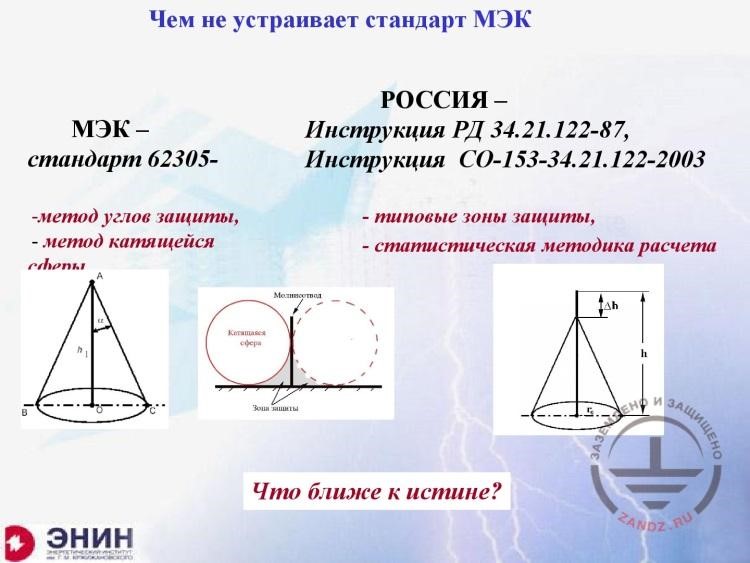
Why is the IEC standard unacceptable?
| Чем не устраивает стандарт МЭК | Why is the IEC standard unacceptable? |
| МЭК – стандарт 62305 - | IEC — standard 62305 - |
| РОССИЯ – Инструкция РД 34.21.122-87, Инструкция СО-153-34.21.122-2003 |
RUSSIA — Instructions RD 34.21.122-87, Instructions SO-153-34.21.122-2003 |
| -метод углов защиты, | - shielding angles method, |
| -метод катящейся сферы | - rolling sphere method, |
| -типовые зоны защиты, | - typical protection zones, |
| -статистическая методика расчета | - statistical calculation method |
| Молниеотвод | Lightning arrester |
| Зона защиты | Protection zone |
| Катящаяся сфера | Rolling sphere |
| Что ближе к истине? | What is closer to the real situation? |
– Let's see. What do we have? The practice of choosing the lightning arresters in Russia and the practice of choosing the lightning arresters in the International Electrotechnical Commission are noticeably different. We could have ignored this difference, but the state standard, without any consultations with the Russian lightning protection experts, published the books with the IEC standard and assigned them a GOST R mark. The instructions for choosing the lightning arresters used in Europe are thus brought to Russia. What is exactly brought here? There are two points. In the IEC standards, first, there is a lightning arrester protection zone that is generated according to the shielding angle method. I can show this zone, but you probably know it. This is the IEC shielding angle protection zone. What is its principal difference? It differs from the Russian protection zone in that the protection zone protrudes from the lightning arrester top. It means that if my facility is located near the lightning arrester, then we do not almost need any elevation of the lightning arrester above the facility to avoid the lightning strike into it. But this is an absurd, because, for this, you need to provide the protection reliability of more than 0.5. The lightning arrester must have an elevation above the facility as it is done here, in Russia. This point is ignored in the IEC regulatory document. The second point in the IEC regulatory document is the rolling sphere principle. We roll the sphere to the lightning rod and the zone under the sphere is considered to be protected. Why are the Russian experts concerned with this?
| Метод углов защиты МЭК | IEC shielding angle method |
| Угол защиты, град | Shielding angle, degrees |
| Уровни внешней молниезащиты | External lightning protection levels |
| h, м | h, m |
| Радиус защиты, м | Protection radius, m |
| III уровень защиты | Protection level III |
| I уровень защиты | Protection level I |
| высота молниеотвода, м | Lightning arrester height, m |
| Молниеотвод выше 10 м нецелесообразен для применения??? | The use of a lightning arrester higher than 10 m is not feasible??? |
| !!! АБСУРД !!! | !!! IT IS AN ABSURD !!! |
– The point is that if you use shielding angles stipulated by IEC, and the method provides for the shielding angles that, first, depend on the protection level (the first to the fourth), and, second, depend on the lightning arrester’s height. If you take these shielding angles and try to generate the protection radius depending on the lightning arrester’s height, then we will obtain the following curve for the first category. What does it mean? It means that the protection radius will increase up to the lightning arrester’s height, and, at the heights of over 10 meters, the protection radius will reduce. It means that the IEC standard states the following: "Guys! You cannot use the lightning arresters of more than 10 meters high! They do not give anything but provide the reduction in the protection radius". And this is true for any level. Exactly the same option is used for the third protection level. I use these angles and transfer them to these points directly. Now, look, for the third protection level as well, after 30 meters, the protection zone begins reducing. There are no physical reasons for doing this. The operating experience does not confirm this at all. It was verified repeatedly in the power lines. Significant statistics was taken from the CIGRE of the International Electrotechnical Commission, and this was clearly demonstrated. You cannot use shielding angles stipulated by the IEC standard.
| Метод катящейся сферы | Rolling sphere method |
| Категория защиты | Protection category |
| Радиус катящейся сферы, м | Rolling sphere radius, m |
| !Физического обоснования метода нет! | ! No physical reason for the method ! |
| 1. Если h > R, защищаемый объем и надежность защиты не зависят от высоты молниеотвода | 1. If h > R, the protected volume and reliability do not depend on the lightning arrester’s height |
| 2. Если h < R, то | 2. If h < R, then |
| Необходимое превышение молниеотвода над объектом не зависит от их высот! | The required lightning arrester’s height elevation over the facility does not depend on their heights! |
| Если R = 45 м and d = 3 м, то ∆h = 0.025 м!!! | If R = 45 m and d = 3 m, then ∆h = 0.025 m !!! |
– However, there are designs made according to the IEC standards. They have been brought to Russia, they exist and they have already been implemented. Let's now take a protection radius instead of a shielding angle. There are four protection radii: 20 meters — Level I, and 60 meters — the last Level IV. I do the following then. I make the protection radius by rolling this sphere around the lightning arrester, and obtain the protected space. All the other areas are not protected. Now, look at what we obtain. If the height of the lightning rod is more than the protection radius, then the increase in the lightning rod’s height does not impact this dimension in any way. It turns out that if the lightning arrester over 20 meters high is useless for the first level, then the lightning arrester over 60 meters high is useless even for the fourth level. This is, again, a physical mistake that cannot be explained in any way. But go online, and you will see many designs offered by the European companies, wherein the lightning arresters had been chosen according to this protection radius. Now, the second point is critical for me. What happens if I take two lightning arresters instead of one? What do we obtain for the radius of this rolling sphere? If the sphere thus laid on the lightning arresters does not touch the facility underneath, the facility is considered to be protected. I have done the following: I used the distance of 45 meters between the lightning arresters and the radius of a rolling sphere for the third protection level, placed a facility there and looked at the elevation of the lightning arresters over the facility, which is considered enough for the facility to be protected according to the rolling sphere method. I obtained the value I am ashamed of: the lightning arrester should be elevated over the facility for 2.5 centimeters. Can you see that? Look. Here is the lightning arrester, there is a facility, and it is protected according to IEC. Now, the sparrow sits on the facility, and it is lower than 2.5 cm. In this case, the facility will be protected. But if a dove sits on the facility, it will not be protected anymore, because elevation of 2.5 centimeters is used here. Can you see that? You cannot use such things in Russia. The State Standard makes a shot in the eye when it brings such requirements here. And thus, we all can suffer from it.
| Методика МЭК | IEC methodology |
| R=20 м | R = 20 m |
| Hм = 60 м | Hl = 60 m |
| Hоб = 40 м | Hvol = 40 m |
| Молниеприемник | Lightning arrester |
| Объект | Facility |
| R=20 м | R = 20 m |
| III уровень защиты | Protection Level III |
| Высота, м | Height, m |
| По углу защиты | According to the protection angle |
| Метод катящейся сферы | Rolling sphere method |
| Радиус защиты, м | Protection radius, m |
| !!! Двукратное расхождение !!! | !!! 2-fold difference !!! |
– I have the protection zone generated. The solid line corresponds to the rolling sphere method, while the dashed line corresponds to the shielding angle method for the third lightning protection level. Look at it. Their protection radii at the ground level differ 2-fold. The question is, what should we use? The rolling sphere? All areas will be protected according to it. Or the shielding angle? According to this method, we should take the lightning arresters that are twice higher. However, this is well accepted, again. The takeaway is the only one: the protection zones according to the IEC standards should not be used in Russia. We have got an instruction for this, because our standard, SO-153-34.21.122-2003, clearly specifies, when we should use the protection zones according to the IEC standard. It should be done in two cases: the first case is when you build a facility outside the Russian Federation, and your customer desires to use the IEC standard. And the customer's demand is a law. If this is outside Russia, perform the design according to the IEC standard. This is the customer's choice. The second case: the facility is in Russia, but the IEC standard in this particular situation provides stricter and narrower zones, and the lightning arresters are higher that they should be according to our Russian zones. If this happened somehow, you can again use the IEC standard. In all other cases, document SO-153 prohibits using this standard.
| Недостатки РД 34.21.122-87 и СО 153.34.21.122-2003 | Drawbacks of RD 34.21.122-87 and SO 153.34.21.122-2003 |
| 1. В общем случае следует пользоваться программой, которая до сих пор не существует официально. | 1. In general, you should use the software that does not formally exist. |
| 2. В итоге молниеотводы выбираются по зонам защиты, надежность которых не определена однозначно. | 2. As a result, the lightning arresters are chosen according to the protection zones, the reliability of which is not accurately determined. |
| 3. Зоны защиты построены для молниеотводов высотой до 150 м. | 3. Protection zones are generated for the lightning arresters having the height of up to 150 m. |
| 4. Учтены только одиночные и двойные молниеотводы, поскольку для многократных молниеотводов зону защиты невозможно построить | 4. Only single and double lightning arresters are considered because you cannot generate a protection zone for the multiple lightning arresters. |
| ИТОГ – проект по зонам защиты практически всегда завышает высоту молниеотводов, а вместе с ней обуславливает повышенную частоту опасных электромагнитных воздействий тока молнии | RESULT: the design created according to the protection zones virtually in all cases provides higher lightning arresters and along with this provides for the increased frequency of dangerous electromagnetic exposures of the lightning current. |
– After I have criticized the international standard, let's get back to our documents. Are our documents correct or not? We have got two of them: RD 34 and SO-153, and they are both effective. Let's see, what the documents contain. The first point reflected in the newer SO-153 is that, in a general case, the lightning arresters should be chosen based not on the protection zones but rather on the statistical method using a special software. This special software is not common even now. That is why this issue in the standard is still pending. But the sponsors of the "Earthing and Lightning Protection at ZANDZ.com" project have launched the software that allows performing calculations for any lightning arresters. But it only works in the trial mode and only within the "Earthing and Lightning Protection at ZANDZ.com" project. The second point is that, when we choose the lightning arresters according to the protection zones, we should take into account the actual protection reliability. This actual protection zone reliability is not specified in document RD 34 at all. SO-153 specifies the reliability, but in the following form: if your facility is entirely located within the protection zone, its protection reliability is not lower than that is shown for the zone. It is not lower, but nobody knows what it is exactly. The facility may be located very far within the protection zone. Its reliability may be many-fold or may be even by an order of magnitude higher that the one specified for the zone. You cannot determine it any way. The third point is probably very serious. If we consider the protection zones in SO-153, then they are generated only for the lightning arresters with the height of up to 150 meters. RD 34 provides the protection zones of up to 600 meters, but they are provided with a very serious error, and we will get back to this error later.
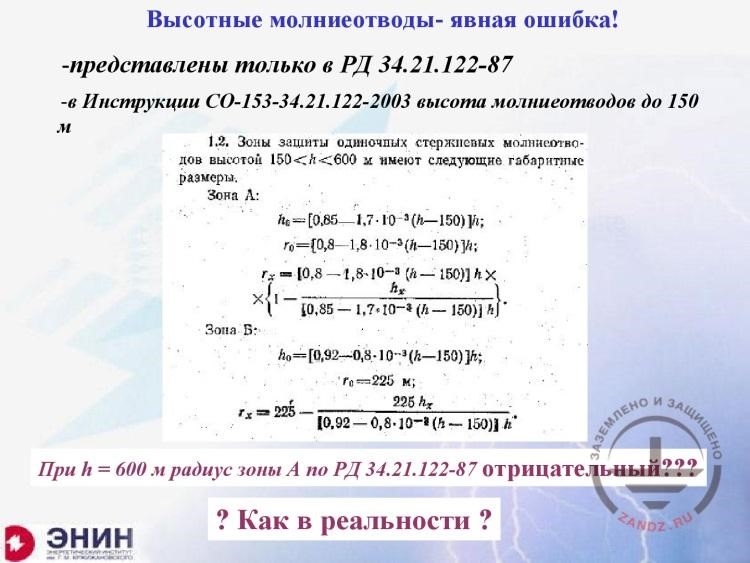
High lightning arresters: an obvious mistake!
| Высотные молниеотводы – явная ошибка! | High lightning arresters: an obvious mistake! |
| - представлены только в РД 34.21.122-87 | - provided only in RD 34.21.122-87 |
| В Инструкции СО-153-34.21.122-2003 высота молниеотводов до 150 м | Instructions SO-153-34.21.122-2003 specify the lightning arrester height of up to 150 m |
| 1.2 Зоны защиты одиночных стержневых молниеотводов высотой 150 < h < 600 м имеют следующие габаритные размеры. | 1.2 Protection zones of single lightning rods with the height of 150 < h < 600 m have got the following dimensions: |
| Зона А: | Zone A: |
| Зона Б: | Zone B: |
| При h = 600 м радиус зоны А по РД 34.21.122-87 отрицательный??? | At h = 600 m, the radius of zone A according to RD 34.21.122-87 is negative??? |
| ?Как в реальности? | ? What is the real situation ? |
– Let's start with the protection zones of high lightning arresters, which are described only in RD 34. The calculation formula is provided. Try to generate a type A zone for the lightning arrester of 600 meters high at the earth level; the protection radius will be negative. How do we understand the negative protection radius? This is absolutely impossible. This value is void of any physical meaning. And if such zone mistake exists, it means that we cannot use these formulas at all. They are incorrect but nobody pays attention to this fact. It is the first aspect. What can we actually do?
| Компьютерный расчет | Computer calculations |
| Высота объекта, м | Facility height, m |
| hM = 300 м | hL = 300 m |
| Надежность защиты 0,99 | Protection reliability of 0.99 |
| 200 м | 200 m |
| 400 м | 400 m |
| Радиус защиты, м | Protection angle, m |
| Причина – стягивание молний в свою ближайшую окрестность | Reason: attracting lightning in the nearest area |
| Фактически высотные сооружения от нисходящих молний защитить нельзя; беспокоиться надо о соседних сооружениях обычной высоты | In fact, you cannot protect the high-rise structures against the descending lightnings; we have to worry about the adjacent structures with the typical height |
| h = 600 м | h = 600 m |
| Низкая эффективность защиты высокими молниеотводами | Low efficiency of protection using high lightning arresters |
| Надежность защиты 0,9 | Protection reliability of 0.9 |
| hM = 600 м | hL = 600 m |
| Высота объекта, м | Facility height, m |
| Радиус защиты, м | Protection radius, m |
| 200 м | 200 m |
| 300 м | 300 m |
| 400 м | 400 m |
– Actually, I tried to plot the protection zones for these high lightning arresters using the computer software. What result did I get? It turns out that the protection zone is reduced beyond the belief. E.g., the 400-meter high lightning arrester has a protection zone radius of only 60 meters at the earth level with the reliability of 0.99. It means that the lightning arrester does not protect the space on the earth even near its foundation. 400-meter high lightning arrester is almost like an Ostankino Tower, and there is no protection even at the distance of 60 meters. Is it true or false? Generally, yes. This is due to the fact that such high-rise structures collect lightning discharges that pass by the lightning arrester and go into the space nearby, which is thus considered to be unprotected. Have you had any experience showing that it is truly so? Yes, we have. When the Ostankino Tower was being built, when it reached its maximum height, there was a lightning strike. The tower was 530 meters high, and the lightning strike was at the distance of less than 200 meters, into the crane truck with the lowered beam, and the tower could not protect this crane truck. The slinger and the driver of this truck died because the strike occurred near the truck. And the situation with the protection zones of high lightning arresters in Russia is absolutely adverse. Another point is that they are needed in few cases because we do not have many high-rise buildings. But the fact remains. In new document SO-153, the protection zone is provided only for the lightning arresters with the height of up to 150 meters.
Next page >>
slides from 11 to 20
Related Articles:


 Lightning Protection of Large Territories: Parks, Grounds, Plant Territories. Page 1
Lightning Protection of Large Territories: Parks, Grounds, Plant Territories. Page 1
 Lightning Protection of Large Territories: Parks, Grounds, Plant Territories. Page 2
Lightning Protection of Large Territories: Parks, Grounds, Plant Territories. Page 2
 Lightning Protection of Large Territories: Parks, Grounds, Plant Territories. Page 3
Lightning Protection of Large Territories: Parks, Grounds, Plant Territories. Page 3


